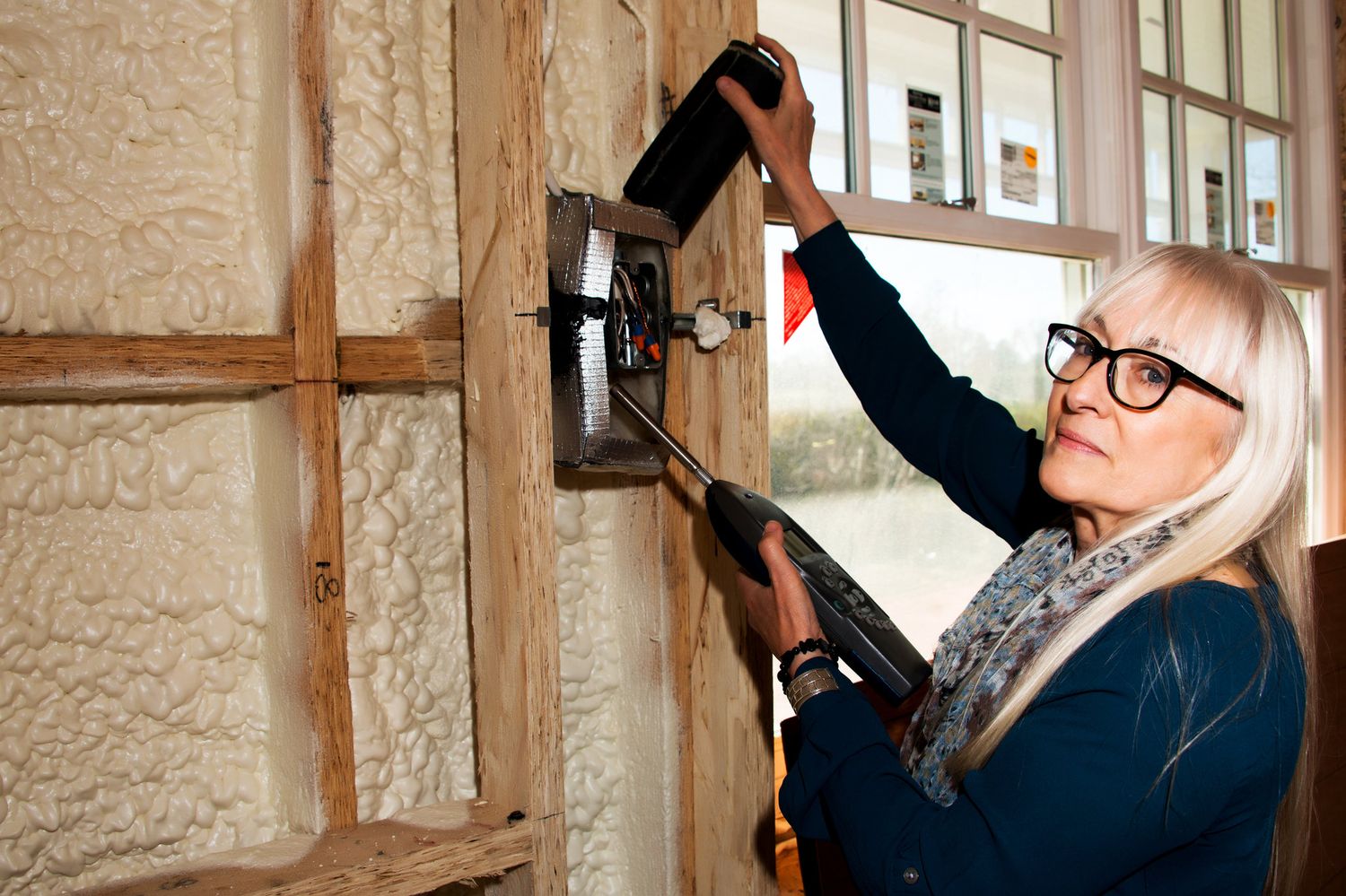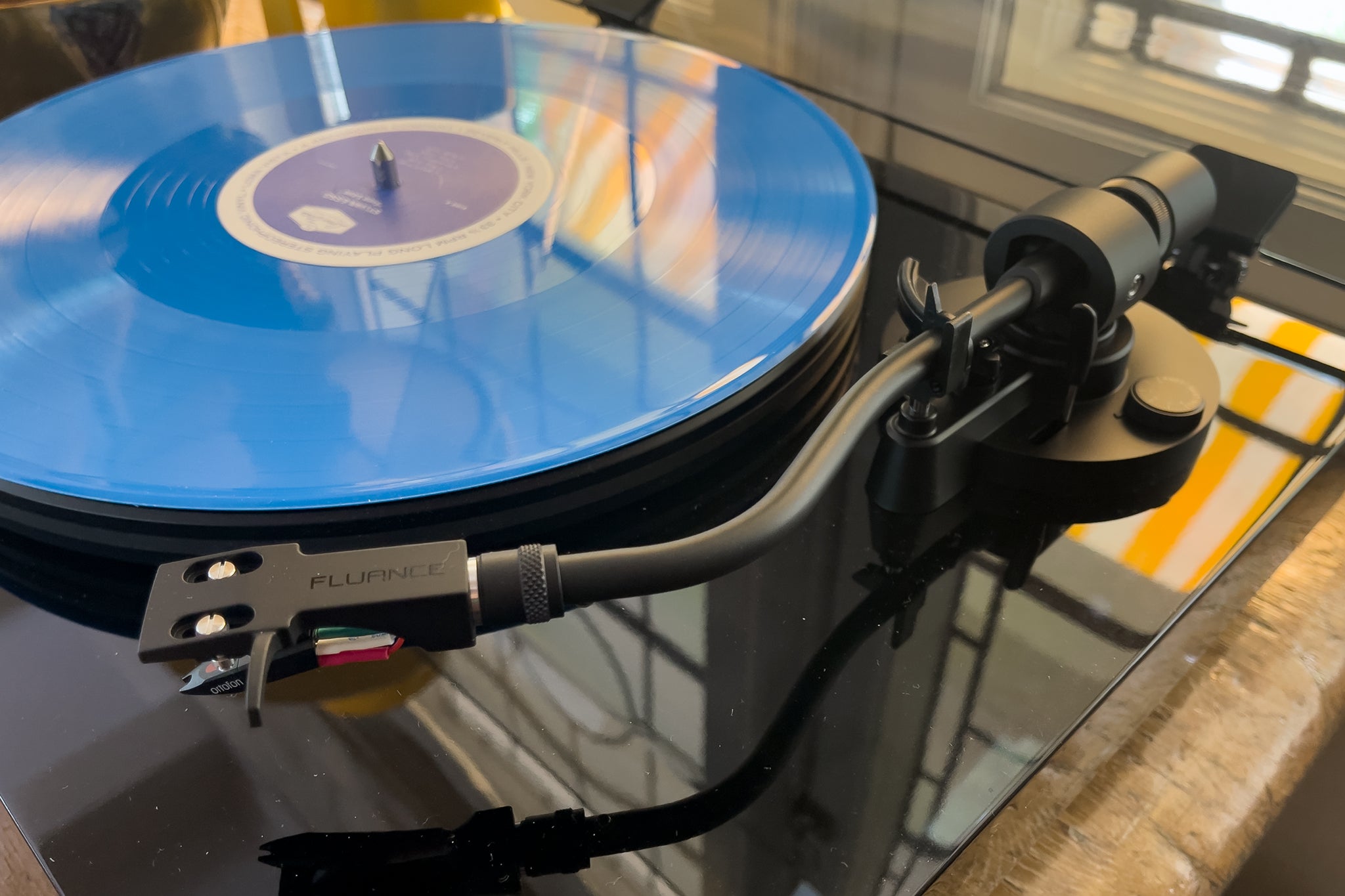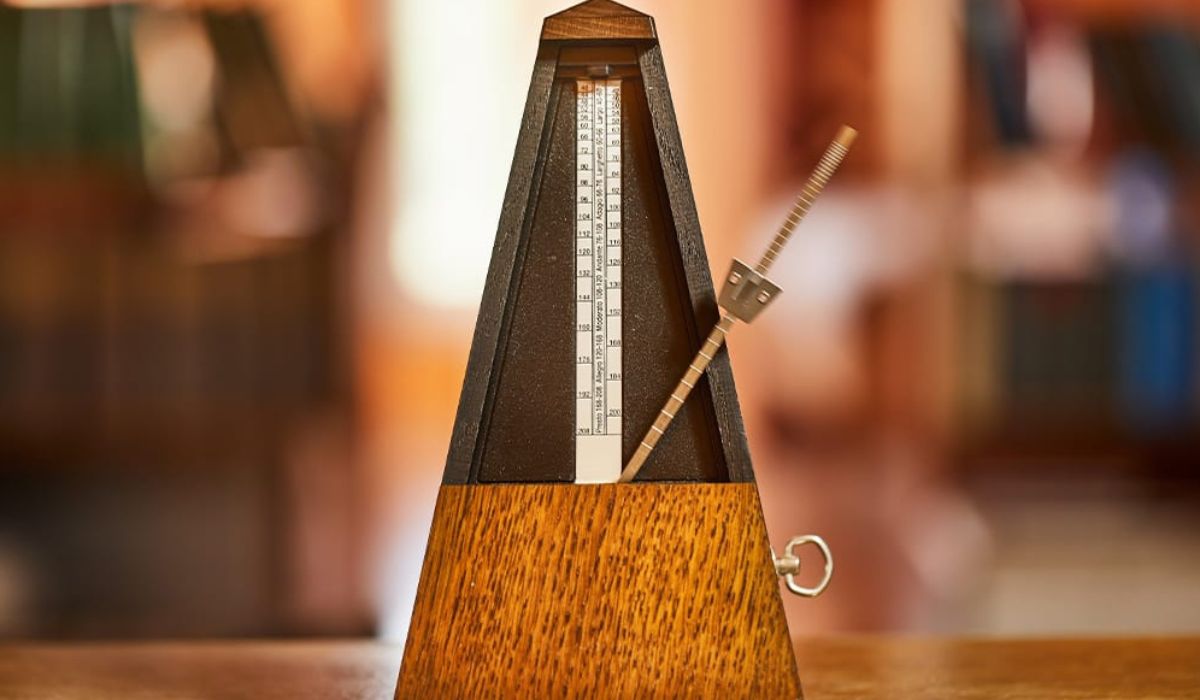Home>Production & Technology>Soundproofing>How Do I Fill In A Hollow Door For Soundproofing


Soundproofing
How Do I Fill In A Hollow Door For Soundproofing
Published: January 27, 2024
Learn how to fill in a hollow door for soundproofing with our step-by-step guide. Achieve a quieter space and enhanced noise reduction.
(Many of the links in this article redirect to a specific reviewed product. Your purchase of these products through affiliate links helps to generate commission for AudioLover.com, at no extra cost. Learn more)
Table of Contents
Introduction
When it comes to creating a quiet and peaceful environment, one of the biggest challenges can be dealing with unwanted noise coming through doors. Hollow doors, in particular, are notorious for poor sound insulation and can let in a substantial amount of noise from outside or between rooms. This can be incredibly frustrating, especially if you live in a busy neighborhood or share living spaces with others.
Fortunately, there are effective solutions to address this issue and improve the soundproofing of hollow doors. By taking the time to fill in the hollow space within the door, you can greatly reduce the amount of noise that seeps through. Whether you’re looking to create a soundproof home office, a quiet bedroom, or a private recording studio, soundproofing your hollow doors can make a world of difference.
In this article, we will explore various methods and techniques for filling in a hollow door for soundproofing. These approaches range from simple DIY solutions to more advanced options, allowing you to choose the best method based on your needs, budget, and skill level.
Before we dive into the specific methods, let’s take a moment to understand why hollow doors are particularly vulnerable to sound transfer and why it’s important to address this issue.
Understanding Hollow Doors
Hollow doors, as the name suggests, are doors that have a hollow core rather than being solid throughout. They are typically constructed with a lightweight framework, with either a cardboard honeycomb or a wooden lattice structure in between the two outer layers of the door. This design makes hollow doors lightweight and cost-effective, but it also makes them prone to transmitting sound.
Unlike solid doors that provide substantial sound insulation, hollow doors lack the density and mass to effectively block or dampen sound waves. Sound waves can easily travel through the empty space within the door and emerge on the other side, resulting in reduced privacy and increased noise levels.
Additionally, the materials used in the construction of hollow doors, such as thin plywood or MDF (medium-density fiberboard), do not possess the same soundproofing properties as solid wood or other dense materials. As a result, sound waves can easily penetrate through the door, allowing noise to pass freely.
This lack of sound insulation makes hollow doors particularly problematic in environments where noise control is important, such as homes near busy streets, apartments, offices, or recording studios. Fortunately, there are ways to address this issue and improve the soundproofing capabilities of hollow doors, which we will explore in the following sections.
Why Soundproof a Hollow Door?
Soundproofing a hollow door offers numerous benefits and can greatly improve the comfort and privacy of your living or working space. Let’s take a closer look at some of the reasons why it is important to soundproof a hollow door:
1. Noise reduction: Hollow doors provide little to no sound insulation, allowing noise to easily pass through. Soundproofing the door helps to reduce external noise, whether it’s from traffic, neighbors, or other sources, making the space quieter and more peaceful.
2. Privacy: Soundproofing a hollow door can enhance privacy within a room. Whether it’s a bedroom, an office, or a studio, preventing sound leakage ensures that conversations, phone calls, or other activities remain confidential and undisturbed.
3. Better sleep quality: A quiet sleeping environment is essential for a good night’s rest. Soundproofing the bedroom door can minimize disruptions from outside noises, allowing you to sleep more soundly and wake up refreshed.
4. Improved productivity: In a home office or workspace, a soundproofed door can help create a focused and productive environment. By reducing distractions from surrounding noise, you can concentrate better and accomplish tasks more efficiently.
5. Enhanced audio quality: For rooms that require optimal sound quality, such as recording studios or home theaters, soundproofing the door helps to prevent sound reflections or external interference. This ensures that you get the best sound experience possible.
6. Energy efficiency: Hollow doors offer poor insulation, allowing drafts and air leakage. By soundproofing the door, you can also improve energy efficiency by reducing heat loss or gain, leading to potential energy savings.
By soundproofing a hollow door, you can enjoy a more peaceful and comfortable living or working space, free from unwanted noise and distractions. Now that we understand the importance of soundproofing hollow doors, let’s explore different methods to achieve this.
Methods for Filling in a Hollow Door for Soundproofing
When it comes to filling in a hollow door for soundproofing, there are several effective methods and techniques to choose from. The approach you select will depend on factors such as your budget, DIY skills, and the level of soundproofing you desire. Let’s explore four common methods:
- Installing Mass Loaded Vinyl (MLV): Mass Loaded Vinyl is a dense, flexible material that is highly effective at blocking sound transmission. To use MLV for soundproofing a hollow door, you can measure and cut the sheet to fit the dimensions of the door, then attach it to one or both sides. This adds mass and density to the door, helping to reduce sound vibrations. MLV can be easily installed using adhesive or screws, and it can be further enhanced by adding an additional layer of plywood or MDF over it for extra soundproofing.
- Using Acoustic Foam Panels: Acoustic foam panels are designed specifically to absorb and dampen sound waves. By attaching these panels to the surface of a hollow door, you can significantly reduce sound transmission. Acoustic foam panels come in various sizes and thicknesses, and they are easy to install with adhesive or velcro strips. It’s important to cover as much of the door surface as possible to maximize soundproofing efficiency.
- Injecting Foam Insulation into the Hollow Space: This method involves filling the hollow cavity of the door with foam insulation. Foam insulation expands to fill gaps and cavities, providing excellent soundproofing properties. You can create small holes in the door, then inject the foam insulation using a foam gun or a similar applicator. Be sure to follow the manufacturer’s instructions for the foam insulation product you choose, taking care not to overfill the hollow space.
- Filling the Door with Soundproofing Materials: Another option is to physically fill the hollow space of the door with soundproofing materials, such as rock wool, cellulose insulation, or recycled denim insulation. This method involves removing the door from its hinges, creating an access point, and carefully packing the insulation material into the door cavity. This approach provides effective sound insulation but may require more effort and expertise.
These methods offer different levels of soundproofing effectiveness and require varying degrees of skill and effort. Consider your specific needs and constraints when selecting the most suitable method for your hollow door soundproofing project.
In the next section, we will explore each method in more detail, providing step-by-step instructions and additional tips to help you achieve the best results.
Installing Mass Loaded Vinyl (MLV)
One effective method for filling in a hollow door for soundproofing is to install Mass Loaded Vinyl (MLV). MLV is a dense, flexible material that is specially designed to block sound transmission. Follow these steps to install MLV on your hollow door:
- Measure the dimensions of your door and cut the MLV sheet to fit accordingly. It is recommended to leave a slight overlap around the edges for better coverage.
- Remove the door from its hinges and lay it horizontally on a stable surface, such as a workbench or sawhorses, to provide easier access for installation.
- Clean the surface of the door thoroughly, removing any dirt, dust, or debris. This will ensure a proper bond between the MLV and the door surface.
- Apply adhesive to one side of the MLV sheet. You can use a strong adhesive specifically designed for MLV or a heavy-duty construction adhesive. Make sure to spread the adhesive evenly over the entire surface.
- Carefully place the adhesive-coated side of the MLV sheet onto the door, starting from one edge and slowly pressing it down. Smooth out any wrinkles or air bubbles as you go along. You can use a hard roller or a rubber mallet to ensure good adhesion and remove any air pockets.
- If desired, repeat the process on the other side of the door for maximum soundproofing effectiveness.
- Allow the adhesive to dry completely according to the manufacturer’s instructions before reattaching the door to its hinges.
Additionally, you can enhance the soundproofing capabilities of the MLV by adding an extra layer of plywood or MDF over it. This added mass and density will further improve the sound insulation of the door.
Installing MLV is a relatively straightforward process, but it may require some DIY skills and patience. It is important to handle the MLV sheet carefully to avoid tearing or damaging it during installation.
Now that we have covered the installation of MLV, let’s move on to the next method: using acoustic foam panels.
Using Acoustic Foam Panels
Another effective method for soundproofing a hollow door is to use acoustic foam panels. Acoustic foam is designed to absorb and dampen sound waves, reducing noise transmission. Follow these steps to use acoustic foam panels on your hollow door:
- Measure the dimensions of your door and determine the amount of acoustic foam panels needed. You can either cover the entire door surface or focus on specific areas that are prone to sound leakage.
- Clean the surface of the door thoroughly to ensure proper adhesion. Remove any dust, dirt, or grease that may hinder the adhesive bond.
- Prepare the adhesive for the acoustic foam panels. Depending on the type of adhesive you choose, follow the manufacturer’s instructions for application.
- Apply the adhesive to the back of the acoustic foam panel. Be sure to cover the entire panel, ensuring a secure bond with the door.
- Carefully position the foam panel on the door, starting from one corner and gradually smoothing it down to avoid air bubbles or wrinkles. Apply firm pressure to ensure proper adhesion.
- If using multiple panels, repeat the process, ensuring proper alignment and coverage. Trim the foam panels as needed to fit the dimensions of the door.
- Allow the adhesive to dry completely before reattaching the door to its hinges.
It is important to cover as much of the door surface as possible with the acoustic foam panels to maximize soundproofing effectiveness. However, keep in mind that covering the entire door may result in a significant change in the door’s appearance.
Acoustic foam panels come in various sizes, thicknesses, and designs, offering flexibility in terms of both aesthetics and sound absorption. Experimenting with different panel configurations can help find the optimal setup for your specific soundproofing needs.
Now that you know how to use acoustic foam panels to soundproof a hollow door, let’s explore another method: injecting foam insulation into the hollow space.
Injecting Foam Insulation into the Hollow Space
Injecting foam insulation into the hollow space of a door is an effective method for soundproofing. Foam insulation expands to fill gaps and cavities, providing excellent soundproofing properties. Here’s how you can inject foam insulation into the hollow space of a door:
- First, remove the door from its hinges and lay it horizontally on a stable surface like a workbench or sawhorses.
- Locate or create access points on the door. This can be done by drilling small holes into the door, preferably in inconspicuous areas or in the bottom edge of the door.
- Select a foam insulation product suitable for door insulation. This can include expanding spray foam insulation or injection foam insulation designed specifically for doors.
- Insert the nozzle of the foam insulation applicator into one of the access holes. Slowly and evenly inject the foam insulation into the hollow space of the door. Take care not to overfill, as the foam will expand and can cause the door to warp or bulge.
- If necessary, repeat the process through multiple access points to ensure even distribution of the foam insulation within the hollow space.
- Allow the foam insulation to fully cure and expand according to the manufacturer’s instructions. This typically takes a few hours.
- Trim off any excess foam insulation protruding from the access holes using a utility knife or a saw.
- Once the foam insulation is fully cured and trimmed, reattach the door to its hinges.
Injecting foam insulation into the hollow space of a door provides an added layer of sound insulation. It fills the empty cavity, minimizing sound vibrations and reducing sound transmission. This method can be highly effective in soundproofing the door and improving overall acoustic control in the room.
Keep in mind that foam insulation is not reversible, so it’s important to carefully consider this method before proceeding. Additionally, if you ever need access to the hollow space of the door for repairs or modifications in the future, foam insulation may need to be removed.
Now that we’ve covered injecting foam insulation, let’s move on to the next method: filling the door with soundproofing materials.
Filling the Door with Soundproofing Materials
Another effective method for soundproofing a hollow door is to physically fill the door’s hollow space with soundproofing materials. This approach involves removing the door from its hinges and packing the empty cavity with insulation materials. Here’s how you can fill the door with soundproofing materials:
- Remove the door from its hinges and lay it horizontally on a stable surface like a workbench or sawhorses.
- Locate or create an access point on the door. This can be done by carefully removing a section of the door, such as the bottom edge or a panel, to create an opening for filling the door with soundproofing materials.
- Select suitable soundproofing materials to fill the door’s hollow space. Options include rock wool, cellulose insulation, or recycled denim insulation. These materials provide excellent sound absorption properties.
- Cut the soundproofing materials into appropriately sized pieces for easy insertion into the hollow space. Ensure that the pieces fit snugly and cover the entire cavity.
- Insert the soundproofing materials into the hollow space through the access point. Pack them tightly to minimize any gaps or air pockets.
- Replace the section of the door that was removed to create the access point. Ensure that it fits securely back into place.
- Reattach the door to its hinges and test its soundproofing performance.
Filling the door with soundproofing materials provides additional mass and density, which helps to absorb sound waves and reduce noise transmission. This method can significantly improve the soundproofing effectiveness of a hollow door.
It’s worth noting that this method requires careful handling and precision to ensure that the soundproofing materials are properly packed into the door without compromising its structural integrity. If you’re unsure about your DIY skills or are concerned about damaging the door, it is advisable to seek professional assistance.
Now that we’ve explored various methods for filling in a hollow door for soundproofing, let’s recap the importance of addressing this issue and create a quieter and more comfortable environment.
Conclusion
Filling in a hollow door for soundproofing is a practical and effective way to reduce noise transmission and create a more peaceful environment. Whether you are dealing with loud neighbors, street noise, or simply seeking privacy within your living or working space, soundproofing your doors can make a significant difference.
Throughout this article, we have explored several methods for filling in a hollow door to improve sound insulation. Installing Mass Loaded Vinyl (MLV) and using acoustic foam panels are relatively straightforward approaches that offer excellent soundproofing capabilities. Injecting foam insulation into the hollow space provides an additional layer of insulation, while physically filling the door with soundproofing materials provides added mass and density for improved sound absorption.
It’s important to consider your specific needs, budget, and DIY skills when choosing a method for soundproofing your hollow doors. Each method offers its own pros and cons, so be sure to evaluate them carefully before making a decision. Additionally, if you are unsure about the process or feel uncomfortable with DIY work, don’t hesitate to consult with a professional soundproofing expert who can guide you through the process.
By soundproofing your hollow doors, you can enjoy a quieter and more peaceful living or working environment. Whether you’re trying to create a quiet home office, improve the privacy of your bedroom, or enhance the sound quality of a recording studio, the right soundproofing method for your hollow door can make a noticeable difference in reducing noise transmission.
Remember to take measurements accurately, follow the manufacturer’s instructions for any soundproofing materials or adhesives used, and be patient during the installation process. With the right approach and materials, you can effectively soundproof your hollow doors and enjoy the benefits of a more tranquil living or working space.











